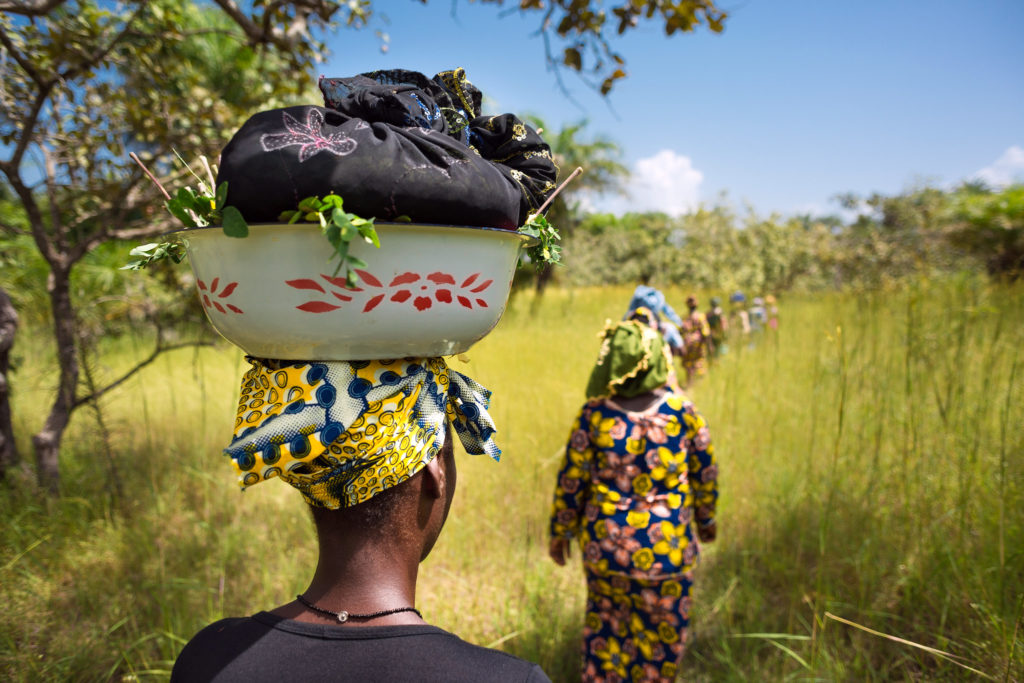Unpaid care work has a female face.
In the lead up to the World Economic Forum 2020 in Davos, Oxfam released a report on unpaid and underpaid care work and the global inequality crises; one of the key messages of the report is the disproportionate amount of care work that falls on women and girls.
Oxfam calculated that women and girls over 15 years spend 12.5 billion hours every day doing unpaid care work—adding at least $10.8 trillion to the economy, an amount three times the size of the world’s tech industry.

In most of the world, it has been taken for granted that women and girls are responsible for care work—looking after young children, cooking for families, tending the sick and, in rural areas, collecting water and firewood. Care work is crucial to our societies and to the economy. Without it, families, communities, workplaces and whole economies would grind to a halt.
But women and girls are subsidizing other sectors, too. A recent World Health Organization report found that the poorest women in the world subsidize health care with their unpaid work to the tune of $1 trillion—a figure larger than the economies of over 150 countries.
The burden of unpaid work by women has negative consequences for their lives and their families. According to a recent ILO report, unpaid care work is the main barrier preventing women from getting into, remaining and progressing in the labor force. In 2018, 606 million working age women said that they were not able to participate in the labour force because of unpaid care work. Only 41 million men—10 times fewer—reported the same.
This much change.
Three main strategies can address the burden and reduce the impact of unpaid care work for women. First, we must recognize and remunerate unpaid care work. It is not enough to just recognize this at the international level, or in research. Governments must recognize and account for this unpaid care work and make efforts to remunerate it.
Countries like Lesotho and Zambia have implemented Child Grant Programs—a cash transfer program that provides unconditional cash transfer to mothers in households with a child under the age of five—to try and make real this request. In Zambia, the Child Grant Program increased the amount of time that women spent on family agricultural and non-agricultural businesses.
Although there have been attempts to include unpaid care work in the calculation of GDP, it is yet to become common practice. There have been more recent calls to include unpaid care work. The World Bank recently observed that GDP only measures flows of income, but doesn’t tell us whether health care, education and the wealth of the natural world are being built up or plundered. The Economist has called for a completely new metric of economic progress that includes unpaid work in the home.
Reduction is also key. Many organizations and trade unions in many countries have advocated for reduction of unpaid care and domestic work through public investment in physical infrastructure—the provision of clean water and sanitation, clean energy and public transport—and in social infrastructure, such as care services and health services. Public infrastructure can reduce the time take by women and girls in collecting fuelwood and cooking: Rural electrification in South Africa reduced the time women spent on such tasks, boosting their participation in paid work by 9 percent.
Structures can also provide childcare. In Kenya, for instance, a project to provide child care services showed that subsidizing it helped mothers to both find and maintain employment. Mothers who received subsidized child care were 17 percent more likely to be employed than mothers who did not.
Redistributing care work between men and women is also necessary. Women perform 76.2 percent of total hours of unpaid care work around the world—more than three times as much as men. In regions such as Asia, Africa and the pacific, this percentage can be as high as 90 percent. Paid family leave can lead to more shared roles in care work between men and women, but research shows that even paid paternity leave has an average length of seven days, against an average length of 106 days for mothers, and that uptake is also low. Enforcing uptake through a “use-it-or-lose-it’ clause in Sweden led to 90 percent uptake of paternity leave, but social norms persist in terms of what is seen as women’s work and men’s work. Until these change, redistribution of care work is going to be an uphill task.
Governments need to walk the talk in addressing the burden of care work on women and girls. They can do this by taking action to show that they take it as seriously as the women and girls who are doing it.





